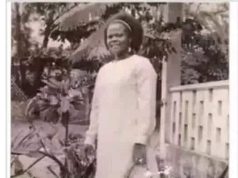HISTORY OF THE GBAGYI PEOPLE
The Gbagyi, also known as Gbari or Agbagyi (plural – Agbagyi), form an ethnic group in Central Nigeria. With a population of approximately 15 million people, they are predominantly found in Niger, Kaduna, Kogi, Nasarawa states, and the Federal Capital Territory, Abuja. The Gbagyi people speak two dialects within their ethnic group.
During pre-colonial Nigeria, the Gbagyi people were referred to as Gwari or Gwagi, which was an adulterated form of Gbagyi, by both the Hausa/Fulani and Europeans. However, they prefer to be recognized by their original name, Gbagyi, which holds deep cultural significance to them.
The Gbagyi people have a rich cultural heritage and a strong sense of identity. They have historically practiced a patrilineal kinship system, wherein the extended family compound is led by the oldest male. These compounds consist of small huts and rectangular buildings, symbolizing the close-knit nature of their communities.
At the apex of Gbagyi settlements, there is the Osu, who is the king and the highest authority figure. Assisted by a group of kingmakers and elders, the Osu holds significant power and plays a vital role in maintaining order and resolving conflicts within the community.
While farming is the primary occupation of the Gbagyi people, they also engage in hunting and traditional crafts such as pottery and woodwork. They are particularly skilled at mixing clay to create decorative household products like pots. Their expertise in these traditional arts and crafts reflects their cultural heritage and artistic expression.
Prominent Gbagyi towns include Minna, Kwakuti, Kwali, Wushapa (Ushafa), Bwaya (Bwari), Karu, Suleija, Abuja, and Paiko. The Gbagyi settlements vary in size, with farming communities usually comprising smaller settlements to allocate sufficient land for agricultural practices.
The migration and scattered settlements of the Gbagyi people have been attributed to different factors. Some historians believe that they were displaced from their original locations during the Fulani jihad, while local historians suggest that the need for fertile farmland prompted their migration. These migrations have shaped the Gbagyi’s relationship with their ancestral lands and have been a subject of concern, particularly during the development of Abuja as Nigeria’s new federal capital.
The Gbagyi people experienced dislocation and were forced to leave their ancestral homes, including spiritual landmarks like Zuma Rock. This displacement and the characterization of their lands as “no man’s land” have caused significant pain and led the Gbagyi people to present their grievances to the federal government, seeking redress and rectification of the misconceptions and anomalies concerning their heritage.
Known for their peaceful and accommodating nature, the Gbagyi people have earned a reputation as a transparent and harmonious community. They have become a source of admiration and are often referenced in the saying, “muyi shi Gwari Gwari” in the Hausa language, which translates to “let’s do it like the Gbagyi” or “in the Gbagyi way.”
The Gbagyi people possess a unique cultural perspective and worldview, as described by Theotanko Chigudu. Their culture reflects their profound understanding and acceptance of the universe. Despite facing various challenges, the Gbagyi aspire to find meaning and purpose in their lives, a testament to their resilience and adaptability.
The Gbagyi language belongs to the Kwasub-division of the Niger-Congo language family, although some researchers, such as Kay Williamson, classify it as part of the Benue-Congo family. This linguistic diversity


 ADVERTISE WITH US. Call or send a Whatsapp message 08070950313
ADVERTISE WITH US. Call or send a Whatsapp message 08070950313


 ADVERTISE WITH US. Call or send a Whatsapp message 08070950313
ADVERTISE WITH US. Call or send a Whatsapp message 08070950313






